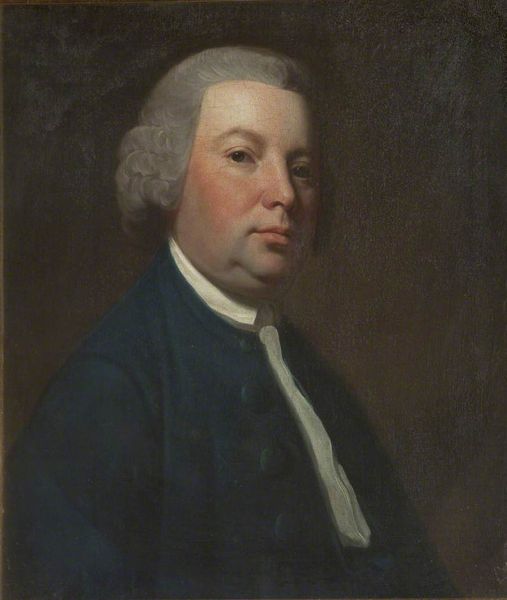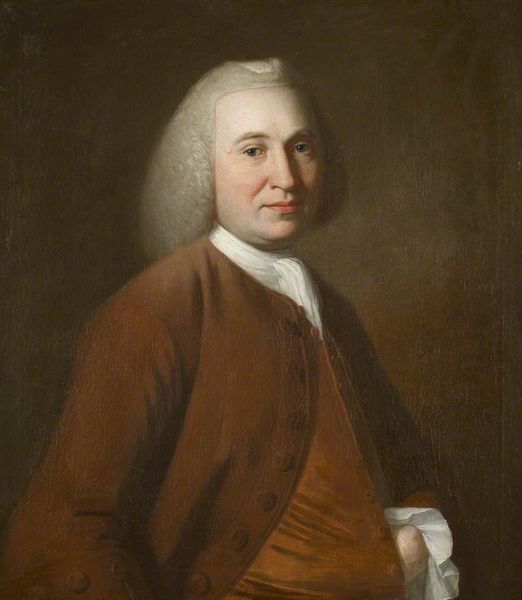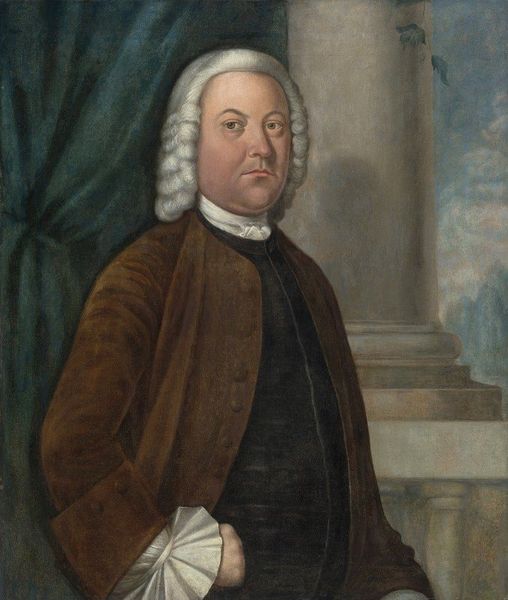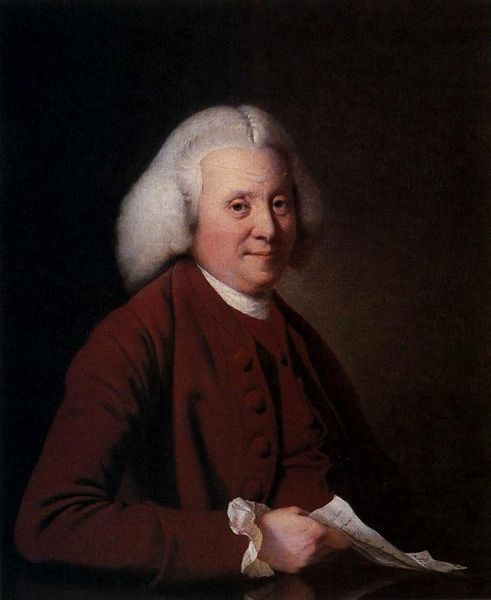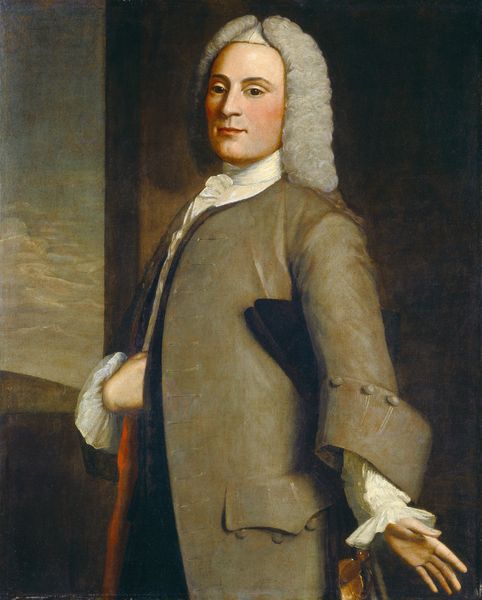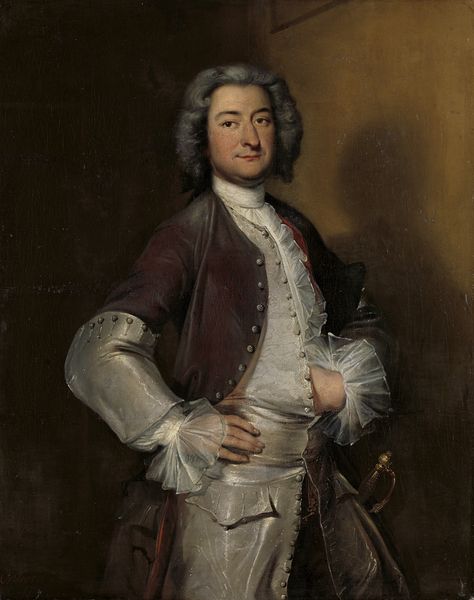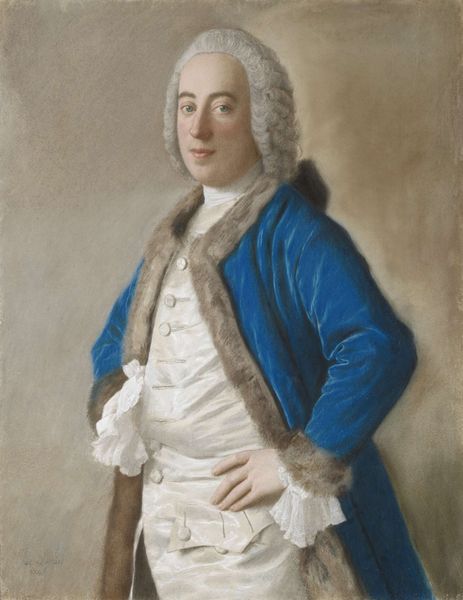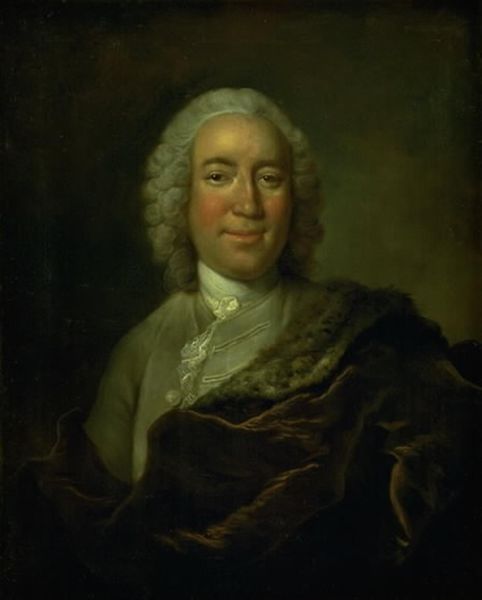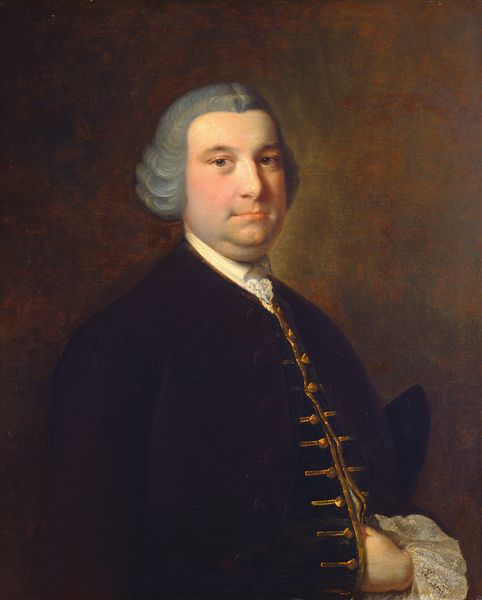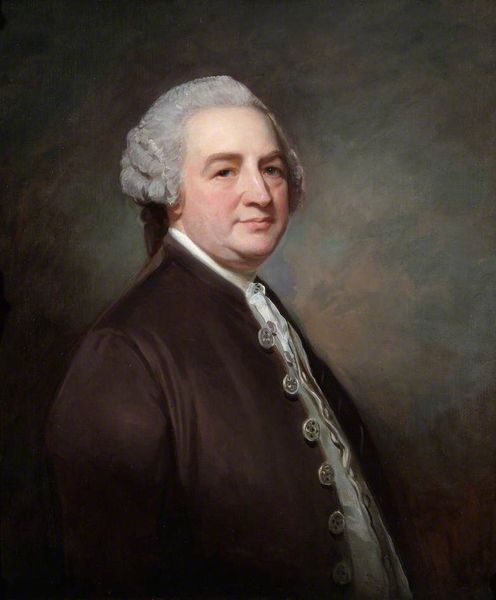
oil-paint
#
baroque
#
portrait
#
oil-paint
#
history-painting
#
realism
Copyright: Public domain
Editor: This oil painting, titled "Thomas Holme, Mayor of Kendal," is attributed to George Romney. I'm immediately struck by the textures of the fabrics. The smoothness of his skin versus the almost manufactured gleam of his satin waistcoat creates such a contrast. What elements of materiality stand out to you in this work? Curator: The labor is certainly evident in Romney’s handling of oil paint to imitate different textiles – look at how the linen shirt is distinct from the wool coat. This tension between artifice and ‘real’ material tells us a lot about eighteenth-century England, the booming textile industry, and the aspirations of the sitter. Editor: So you’re saying that the very depiction of these materials connects to larger economic forces? Curator: Precisely. Consider also the buttons: their presence signifies wealth and trade. Romney is not just showing us a portrait, but a material inventory of power. We see the sitter, Thomas Holme, yes, but more so we see how the social and the material were fundamentally entwined during his time as mayor. It begs the question: what did being mayor *mean* materially in 18th century Kendal? Editor: That's fascinating! So it is about how these materials reflect broader societal structures and the production of value itself. Curator: Indeed. Next time you encounter a portrait, ask yourself: what story do the materials tell, and who benefited from their production? Editor: I never thought about portraiture that way. Thank you!
Comments
No comments
Be the first to comment and join the conversation on the ultimate creative platform.
